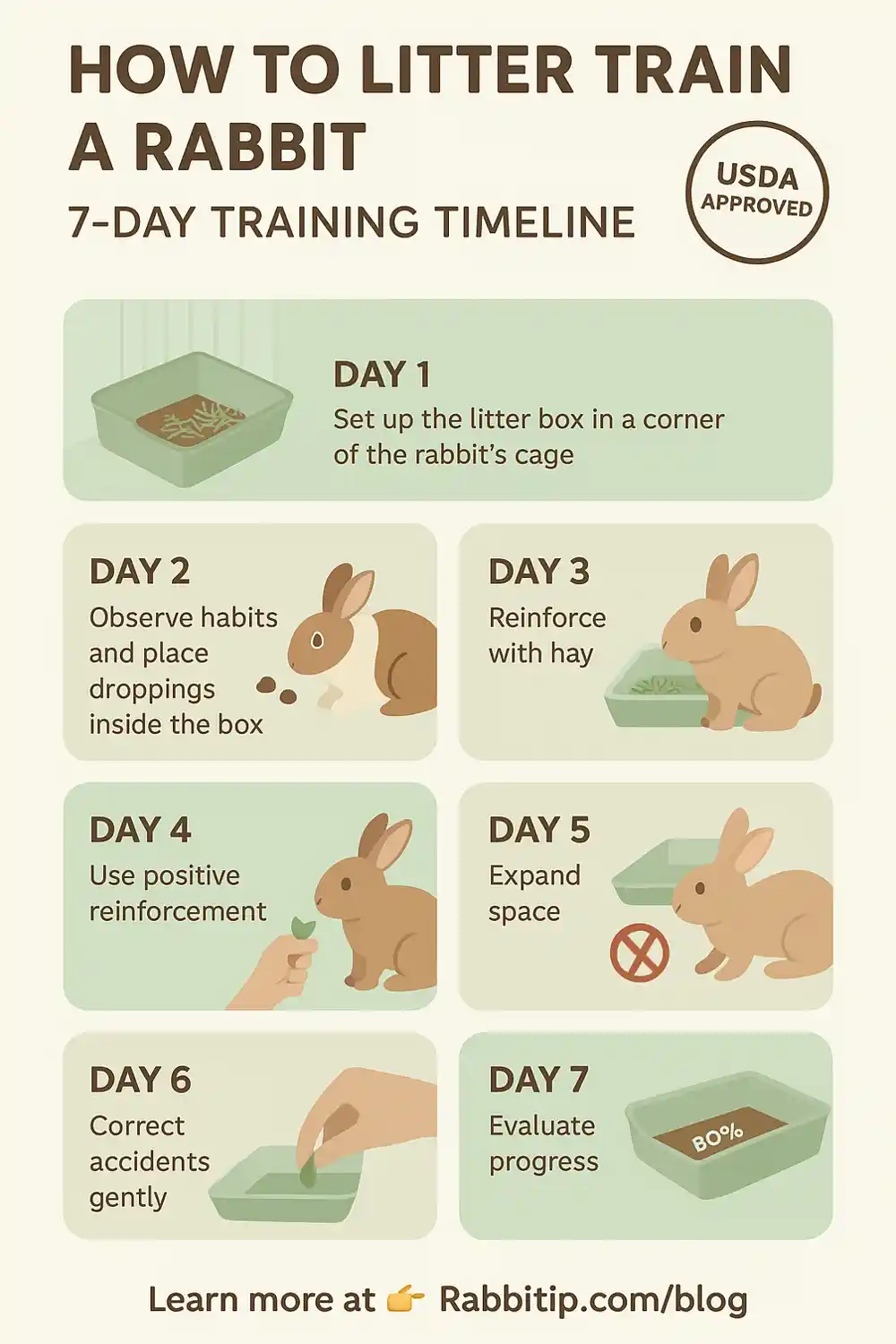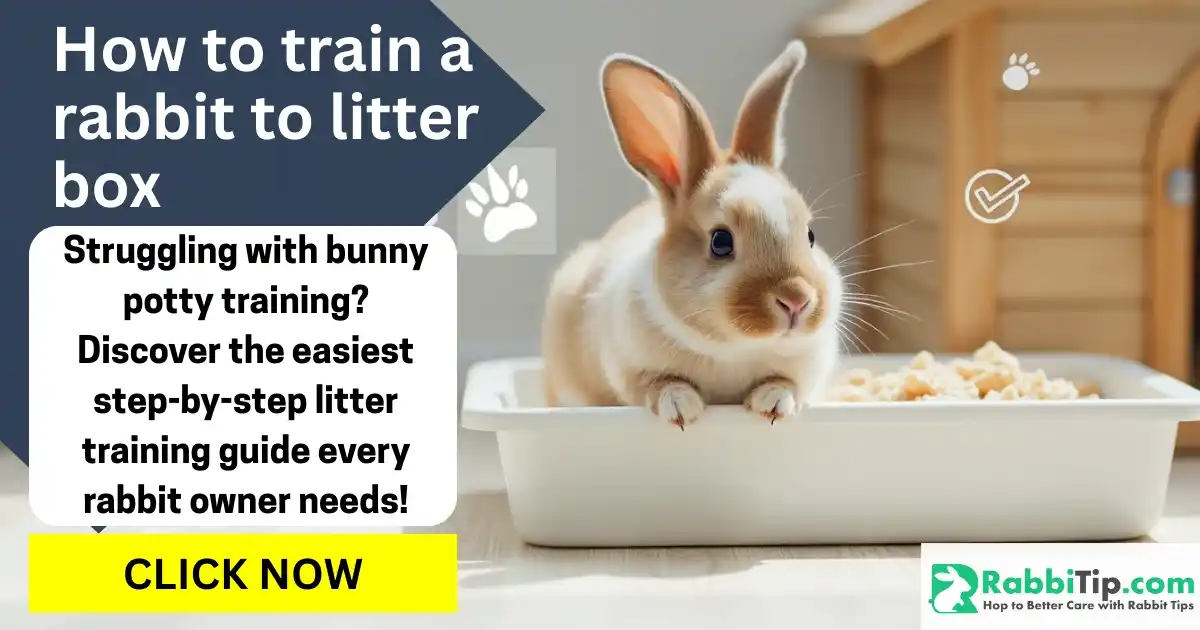Training your rabbit to use a litter box is very easy. Rabbits like to be clean. With a good setup, they learn fast. Use safe tips from rabbit vets. This will keep your rabbit’s home neat. It also makes your daily care simple. This guide shows you all you need. We cover picking supplies and a clear training plan.
First, know why this training helps. A trained rabbit is cleaner. It has fewer accidents. Its home is healthier. Experts say good litter habits stop bad behavior. This includes marking and stress chewing. A clean home is comfy for your pet. It also follows safe care rules.
Get your supplies ready to start. The litter box must be big and safe. Put it in a corner that your rabbit knows. Do not use clay cat litter. It is not safe. Pick paper or wood pellets instead. You can also use hay-based bedding. Many good brands follow safety rules. This makes it easy to pick a safe choice. Put fresh hay in the box. It acts as a treat and a training help.
One last tip is to fix your rabbit. Rabbits that are not fixed may mark their space. This makes training tough. Vets say fixing helps your rabbit’s health and actions. With a good setup, safe items, and time, your rabbit can learn in just one week.
What you’ll need to litter train a rabbit
Before learning how to litter train a rabbit, you must gather safe and effective supplies. According to the AVMA-Approved Supply Checklist, these are the essentials:
- Rabbit litter box – Large, American-made plastic pans that meet USDA cage dimension rules.
- USDA-approved bedding and litter – Avoid clay cat litter. Use paper-based, wood-pellet, or hay-based options.
- FDA-approved cleaning spray – Safe for rabbits and available in U.S. pet stores.
- American hay brands – Timothy hay from U.S. farms keeps digestion healthy and doubles as a training reward.
- Spay/neuter confirmation – AVMA stresses surgical sterilization for better training success.
American-made product recommendations:
- Kaytee Clean & Cozy (Wisconsin-based brand) – safe bedding
- Oxbow Timothy Hay (Nebraska brand) – USDA-approved
- Living World Litter Pan – widely available in U.S. pet chains
Want to keep your rabbit entertained during training? Provide bunny chew toys to prevent boredom-related accidents.
How to litter train a rabbit step by step
7-Day Training Timeline with USDA Reinforcement Techniques
- Day 1 – Set up the litter box in a corner of the rabbit’s cage following USDA space guidelines. Place hay in one half.
- Day 2 – Observe habits. Most rabbits naturally choose a corner. Place droppings inside the box to encourage use.
- Day 3 – Reinforce with hay. Rabbits eat and poop together. Hay inside the litter box increases success.
- Day 4 – Use positive reinforcement. Reward correct use with small treats approved by the AVMA.
- Day 5 – Expand space. Allow the rabbit to roam a safe, rabbit-proofed room with litter boxes placed strategically.
- Day 6 – Correct accidents gently. Move droppings into the litter box. Never punish.
- Day 7 – Evaluate progress. If the rabbit uses the litter box 80% of the time, continue expanding their roaming area.
USDA-approved reinforcement techniques focus on consistency, safe treats, and stress-free correction.

Choosing the best rabbit litter box
U.S. safety standards emphasize size and durability. Cost-effective solutions include plastic litter pans, corner pans, and high-sided boxes. Availability differs across states, but American brands dominate pet store shelves.
Table 1: Litter Box Showdown
| Type | Size | Price Range | USA Availability |
|---|---|---|---|
| Corner Pan | Small–Med | $10–15 | Nationwide |
| Large Cat Pan | Large | $15–25 | Nationwide |
| High-Sided Pan | Medium–Large | $20–30 | Major U.S. cities |
| Stainless Steel Pan | Large | $30–40 | Specialty only |
Choosing the best bedding and litter for rabbits
USDA and AVMA stress avoiding clumping clay or scented litter. American brands offer affordable and safe options. For more research, see Rabbit Care – Wikipedia.
Table 2: Bedding Materials Rating
| Material | Absorbency | Safety (AVMA) | Cost/Bag (USA) |
|---|---|---|---|
| Paper Pellets | High | Safe | $15–20 |
| Aspen Shavings | Medium | Safe | $10–15 |
| Timothy Hay | Medium | Safe | $12–18 |
| Clay Cat Litter | High | Unsafe | $8–12 |
Common Rabbit Litter Training Problems and Solutions
Accidents happen even with the best plan. American vets recommend identifying causes early.
Table 3: Problem-Solution Matrix
| Issue | Cause | AVMA-Approved Fix |
|---|---|---|
| Rabbit not using litter box | Stress, illness, or hormones | Vet check, spay/neuter, gentle reset |
| Pooping everywhere | Dominance or marking | Place multiple boxes, clean often |
| Digging in litter | Wrong bedding choice | Switch to heavier pellets |
| Sudden accidents after success | Urinary infection | Immediate vet visit (find rabbit vet near you) |
When to start litter training
According to the AVMA, the best age to begin is 3–6 months. Younger rabbits may lack bladder control, while older ones can still succeed with patience.
Flowchart:
Baby (under 3 months) → Practice only → Wait until older
3–6 months → Start full training → Use spay/neuter support
Adult (6+ months) → Begin with patience → Expect slower progress
Spay/Neuter impact on training
Spaying/neutering is vital for litter training. According to AVMA surgical guidelines:
Flowchart:
Unfixed rabbit → Hormonal marking → Poor litter habits
↓
Spay/Neuter → Hormone balance → Better litter box success
Multi-Rabbit litter solutions
For households with more than one rabbit, USDA recommends one litter box per rabbit, plus one extra.
Flowchart:
Single rabbit → One box
Two rabbits → Three boxes
Three rabbits → Four boxes
Maintaining litter box hygiene
USDA sanitation protocols recommend daily spot cleaning and full replacements every 3–4 days. Use FDA-approved vinegar or rabbit-safe sprays.
Flowchart:
Daily → Remove wet bedding
Every 3 days → Wash with vinegar solution
Weekly → Replace litter fully
✅ Emergency Mistake Checklist (Printable for U.S. Owners):
Emergency Mistake Checklist (Printable for U.S. Owners):
- Using clumping clay litter – Unsafe.
- Skipping daily cleaning – Breaks USDA hygiene rules.
- Ignoring sudden accidents – May signal illness.
- Not spaying/neutering – Causes hormonal marking.
- Allowing unsafe cage size – Violates USDA standards.
📌 Free Resources for Rabbit Owners (Downloadable PDFs):
FAQ for rabbit’s litter training
How long does it take to litter train a rabbit?
Most U.S. owners see success within 2–4 weeks using USDA methods.
Are male or female rabbits easier to litter train?
After spaying/neutering, both genders perform well. Males may take longer due to marking.
At what age can rabbits be litter-trained?
American Veterinary Medical Association (AVMA) recommends starting at 3–6 months. Younger kits may not have control yet.
Can you litter train an older rabbit?
Yes, even senior rabbits can learn with consistent routines.
Why is my rabbit suddenly ignoring the litter box?
This may signal illness, such as a urinary infection. Contact a state-licensed vet immediately using the Rabbit Vet Near You Tool.

